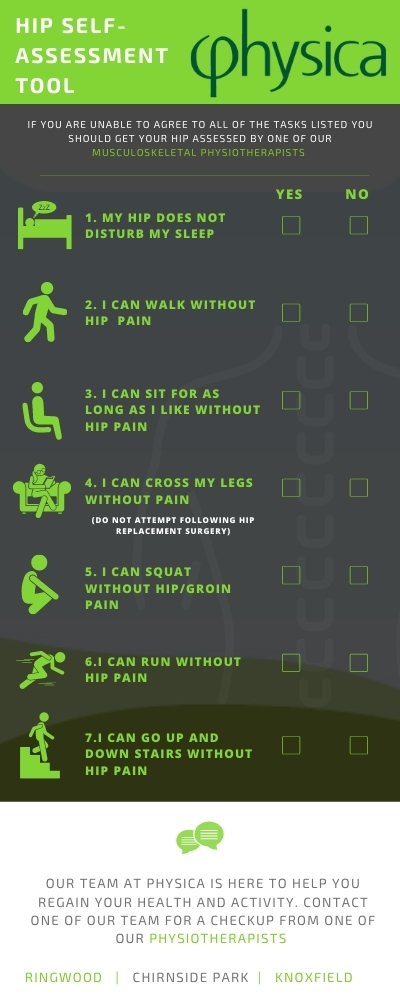The hip is a large and very mobile joint formed by the ball (femoral head, which is the upper portion of the femur or thigh bone) and socket (acetabulum, which is a cup-shaped part of the pelvis). It connects the axial skeleton to the lower extremities designed to provide stability and weight transfer.
Being a synovial joint, the femoral head and acetabulum are lined with a durable layer of articular cartilage to help cushion the ends and allow smooth, pain-free movement. The capsule is surrounded by a thin tissue called a synovial membrane and the fluid produced by this membrane lubricates and nourishes the joint helping to eliminate friction.
On the outer surface of the acetabulum is a layer of circular cartilage called the labrum and it helps to deepen the socket therefore providing further stability of the joint. The hip is further supported by strong reinforcing ligaments and muscle groups (these are the gluteals, quadriceps, hamstrings, iliopsoas & adductor muscles).
Hip Conditions:
Anatomy Hip Joint
- Osteoarthritis - find out more
- Total hip replacement- read more
- Trochanteric bursitis- find out more
- Femoroacetabular impingement (FAI) find out more
- Labral tear- find out more
- Cam lesion- find out more
- Piriformis Syndrome- find out more
- Ostitis Pubic- find out more
Hip Self Assessment Tool
Need additional help
Our team at Physica are here to help you with all of your musculoskeletal conditions. Please book online using the link in the header or if you have additional questions prior to bookings contact us via email.


